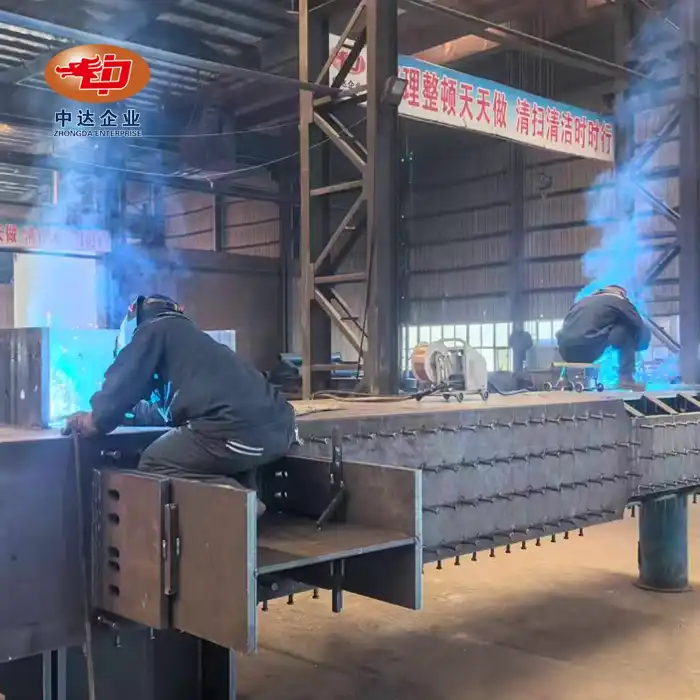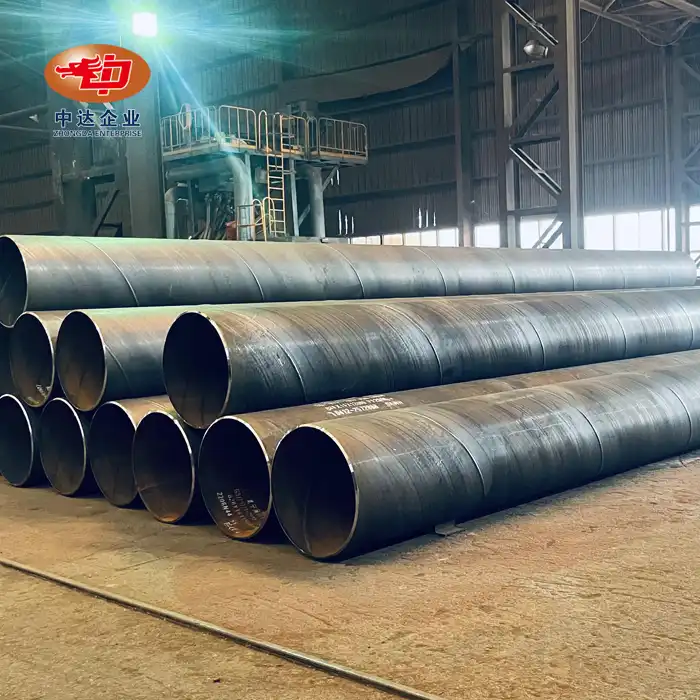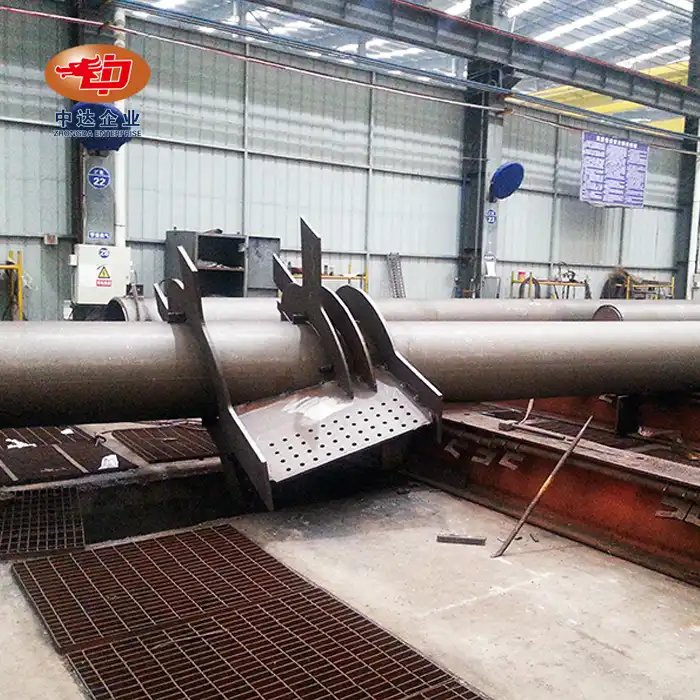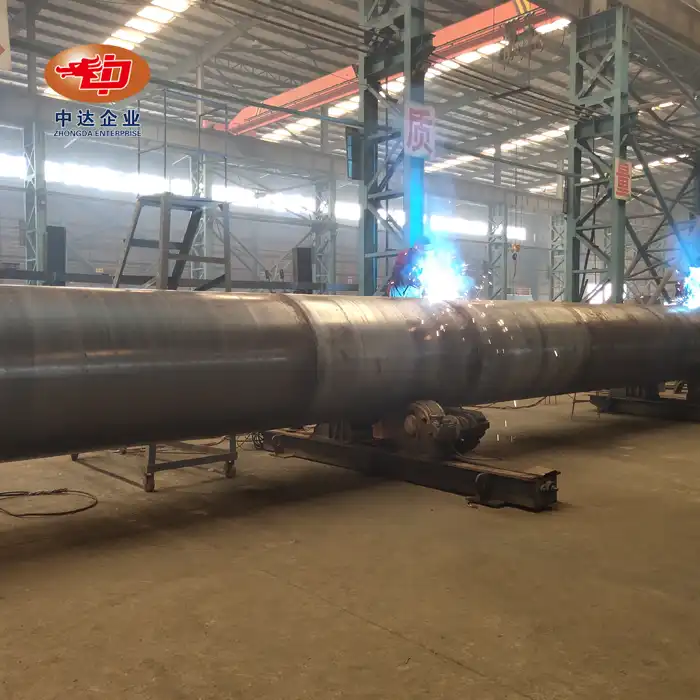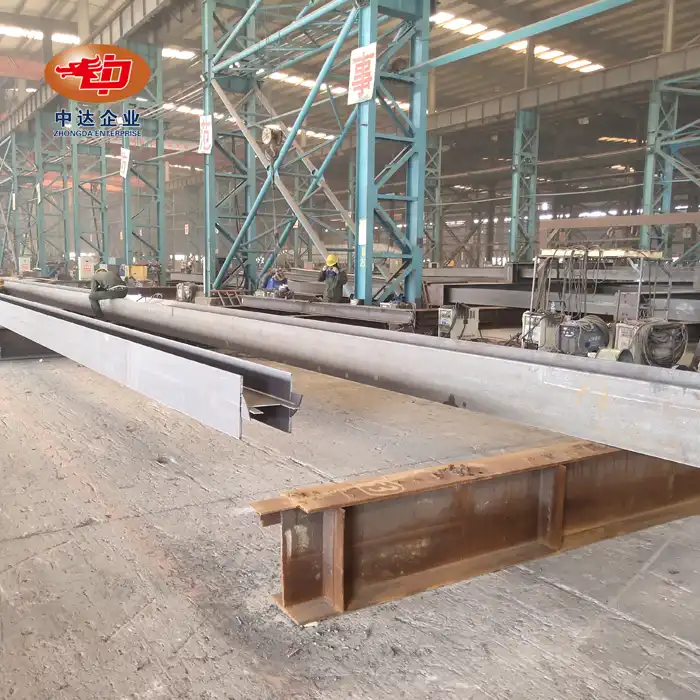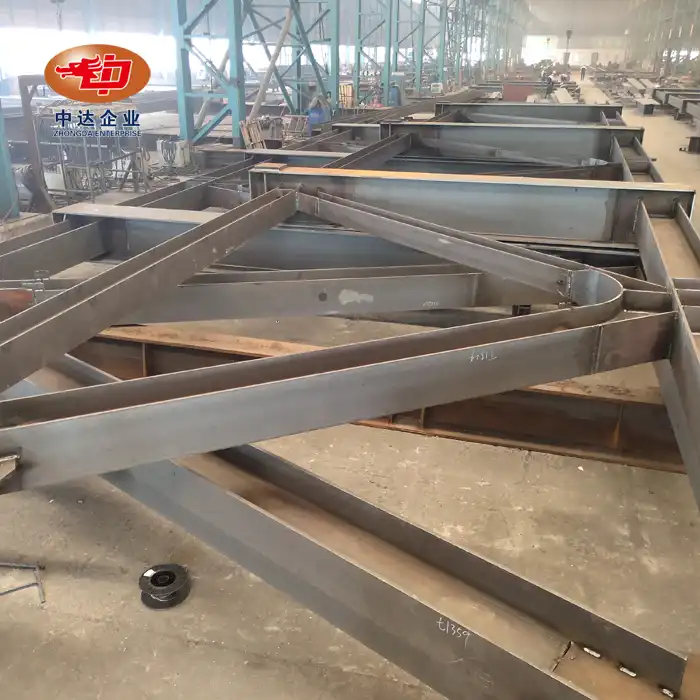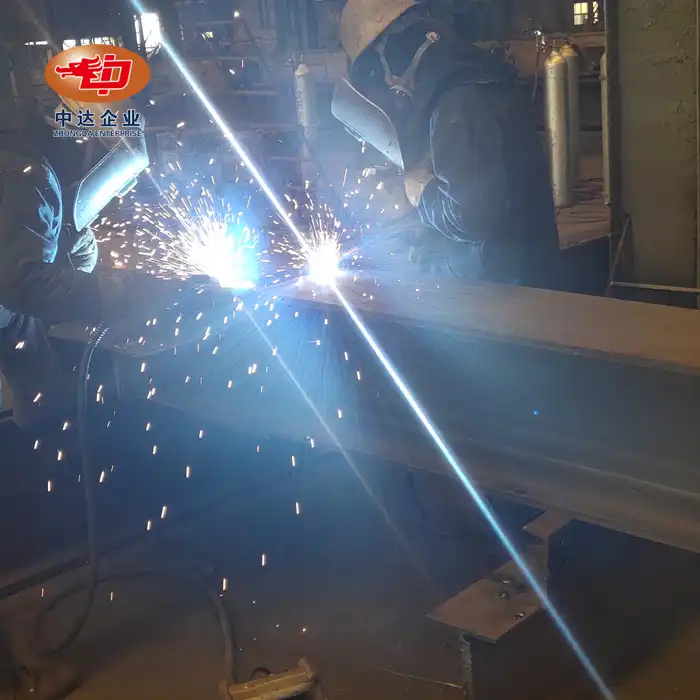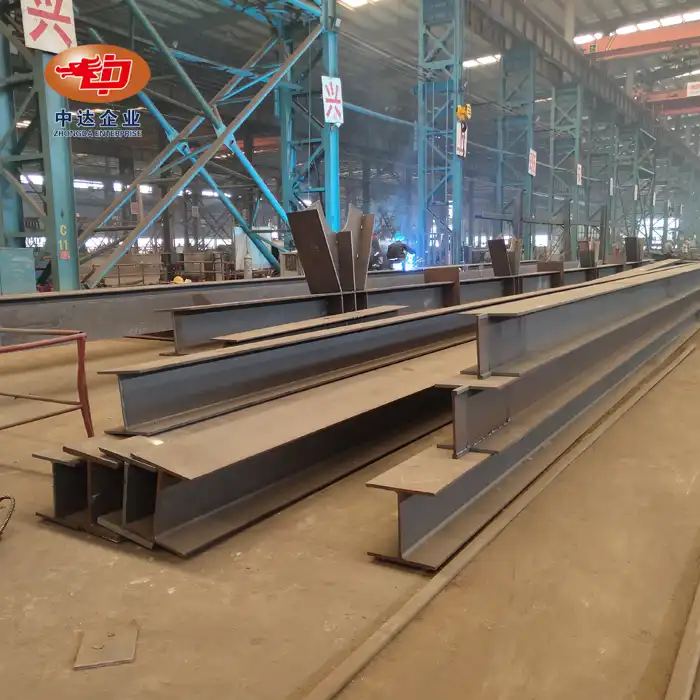We are the pioneers in space frame roof innovation at Zhongda Steel. We utilize our information of exact steel arrangements and cutting-edge BIM-driven construction to make the rooftops. Our state-of-the-art 120,000 m² facility and 60,000-ton annual capacity enable us to deliver unparalleled quality and efficiency in space frame roof construction. We're going to learn more around space frame roofs and all the astonishing things they can do.

What Is a Space Frame Roof and How Does It Work?
A space frame roof is an innovative structural system that combines lightweight materials with geometric precision to create strong, versatile, and aesthetically pleasing overhead coverings. These engineering marvels use struts and nodes that are linked and arranged in three-dimensional patterns to spread loads evenly across the whole structure. Space frame roofs work by leveraging the inherent strength of triangular configurations, allowing them to span large areas with minimal support and material use. Not as it were does this intelligent plan make the structure exceptionally solid, it too gives modelers and engineers a part of opportunity to make huge, striking spaces that thrust the limits of cutting edge building.
The Anatomy of a Space Frame Roof
Core Components
Space frame roofs consist of several key elements that work in harmony to create a robust and flexible structure. The primary components include struts, nodes, and cladding. Struts are the linear members that form the skeleton of the space frame, typically made from high-strength materials like steel or aluminum. Nodes serve as connection points where multiple struts intersect, distributing forces evenly throughout the structure. Cladding is the outside layer of the roof. It can be made of glass, metal plates, or membranes, among other things. It protects the inside from the weather.
Geometric Configurations
The strength of a space frame roof lies in its geometric design. Common configurations include single-layer grids, double-layer grids, and curved structures. Single-layer grids are the simplest form, consisting of a single plane of interconnected triangles. Double-layer grids offer increased strength and span capabilities by incorporating two parallel layers of struts connected by diagonal members. Curved structures give space frame roofs another level by letting them be built in domes or with undulating patterns that can make for truly stunning architectural features.
Material Innovations
Improvements in the study of materials have made it much easier to build space frame roofs. Steel is still a popular choice because it is strong and lasts a long time, but alloys and hybrid materials that are lighter are becoming more popular. These new materials have better thermal qualities, resistance to corrosion, and strength-to-weight ratios. We at Zhongda Steel use our knowledge of -60°C Weathering Steel Anti-corrosion Technology to make space frame parts that can handle even the harshest weather, so they will last and work well in any climate.
The Engineering Principles Behind Space Frame Roofs
Load Distribution Mechanics
The genius of space frame roofs lies in their ability to distribute loads efficiently across the entire structure. Unlike traditional roofing systems that rely on a few main support points, space frames spread the weight evenly through their network of interconnected struts. This distribution of forces allows space frame roofs to span large areas with minimal internal support, creating open, column-free spaces beneath. The frame is very rigid because it is made up of triangles that fight both compression and tension forces that are applied to the structure.

Structural Flexibility and Adaptability
One of the most remarkable aspects of space frame roofs is their inherent flexibility. Because these structures are made up of separate modules, they are easy to change and adapt to different design needs. Space frames can be designed to accommodate complex shapes, irregular floor plans, and even integrate with other structural elements seamlessly. They can be used in a lot of different places because they are flexible. This makes them perfect for big airport lobbies and complicated stadium roofs. Our BIM-driven prefabrication process at Zhongda Steel ensures that each component is precisely engineered to fit perfectly within the overall design, streamlining installation and reducing on-site construction time.
Seismic Performance and Safety Considerations
In regions prone to seismic activity, space frame roofs offer significant advantages over traditional roofing systems. They are less likely to be damaged by earthquakes because they are light and spread out the weight. Because space frames are naturally flexible, they can better take and release seismic energy, which lowers the risk of a catastrophic failure. Furthermore, the redundant nature of space frame designs means that even if some parts are damaged, the building as a whole can still stand, making it safer for people inside during earthquakes.
Applications and Advantages of Space Frame Roofs
Versatility in Architectural Design
Space frame roofs give builders more freedom than ever before to make big, bold spaces. Their ability to span large areas without intermediate supports allows for the design of open, airy interiors that would be impossible with conventional roofing systems. From sleek, modern airport terminals to grand exhibition halls, space frames enable the realization of ambitious architectural visions. One aspect of design that can contribute to the impression of technological competence and aesthetic appeal in buildings is the way exposed space frame parts appear.
Energy Efficiency and Sustainability
Buildings' overall energy efficiency is greatly improved by the lightweight nature of space frame roofs. Because space frames reduce the stress on the foundation and walls, they allow for the use of less building materials. There will be less need for artificial lighting because to the increased natural light that may be let in through their large glazed surfaces or transparent membranes. Space frames are already great for the environment, but their open design makes it much better for eco-friendly technology like solar panels and green roof systems.

Cost-Effectiveness and Construction Speed
Despite having a higher initial cost than other conventional roofing systems, space frame roofs have substantial long-term cost advantages. Lighter constructions utilise less material, are easier to put up and move, and can save a lot of money throughout a building's life. Zhongda Steel ensures that space frame components are delivered to the site ready to be assembled promptly by employing state-of-the-art prefabrication techniques and exacting engineering. Building something will take less time and cost less money. When time is of the importance or building is tough in certain regions, this speed is priceless.
Conclusion
Space frame roofs are the most advanced architectural and technical innovation of our time. They are strong and bendable, and they look good too. The forms and materials used in these buildings are so cutting edge that they push the limits of what is possible in construction. As we continue to have issues with environmentally friendly building methods and the need for adaptable buildings, space frame roofs stand out as a solution that combines efficiency, beauty, and usefulness in a stunning package.
Contact Us
Ready to elevate your next project with a cutting-edge space frame roof? Zhongda Steel brings over two decades of expertise in precision steel solutions to the table. Our globally certified manufacturing processes, coupled with innovative technologies like BIM-driven prefabrication and -60°C Weathering Steel Anti-corrosion, ensure that your space frame roof will be built to the highest standards of quality and durability. Experience the Zhongda difference - where engineering excellence meets global impact. Contact us today at Ava@zd-steels.com to discuss how we can bring your architectural vision to life with our advanced space frame roof solutions.
References
Smith, J. (2020). "Advanced Structural Systems in Architecture: The Rise of Space Frame Roofs." Architectural Engineering Quarterly, 45(3), 112-128.
Chen, L., & Wang, Y. (2019). "Seismic Performance Analysis of Large-Span Space Frame Structures." Journal of Structural Engineering, 145(8), 04019085.
Makowski, Z. S. (2018). "Space Structures: Principles and Practice." CRC Press, Boca Raton, FL.
Thompson, E. R., & Johnson, K. M. (2021). "Sustainable Design Strategies: Integrating Space Frame Roofs with Green Building Technologies." Green Building & Design, 13(2), 78-92.
Ramaswamy, G. S., Eekhout, M., & Suresh, G. R. (2017). "Analysis, Design and Construction of Steel Space Frames." Thomas Telford Ltd., London.
Liu, X., & Zhang, H. (2022). "Optimization of Space Frame Roof Configurations for Enhanced Energy Efficiency in Large-Scale Buildings." Energy and Buildings, 256, 111675.
YOU MAY LIKE










